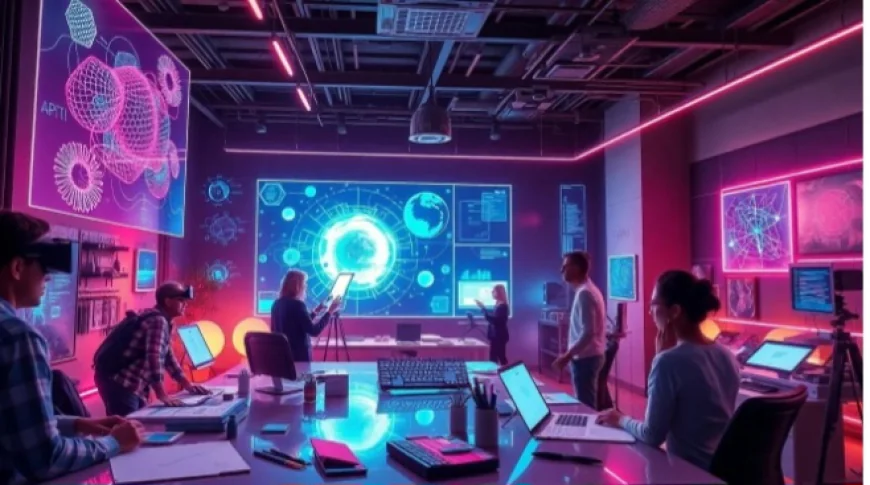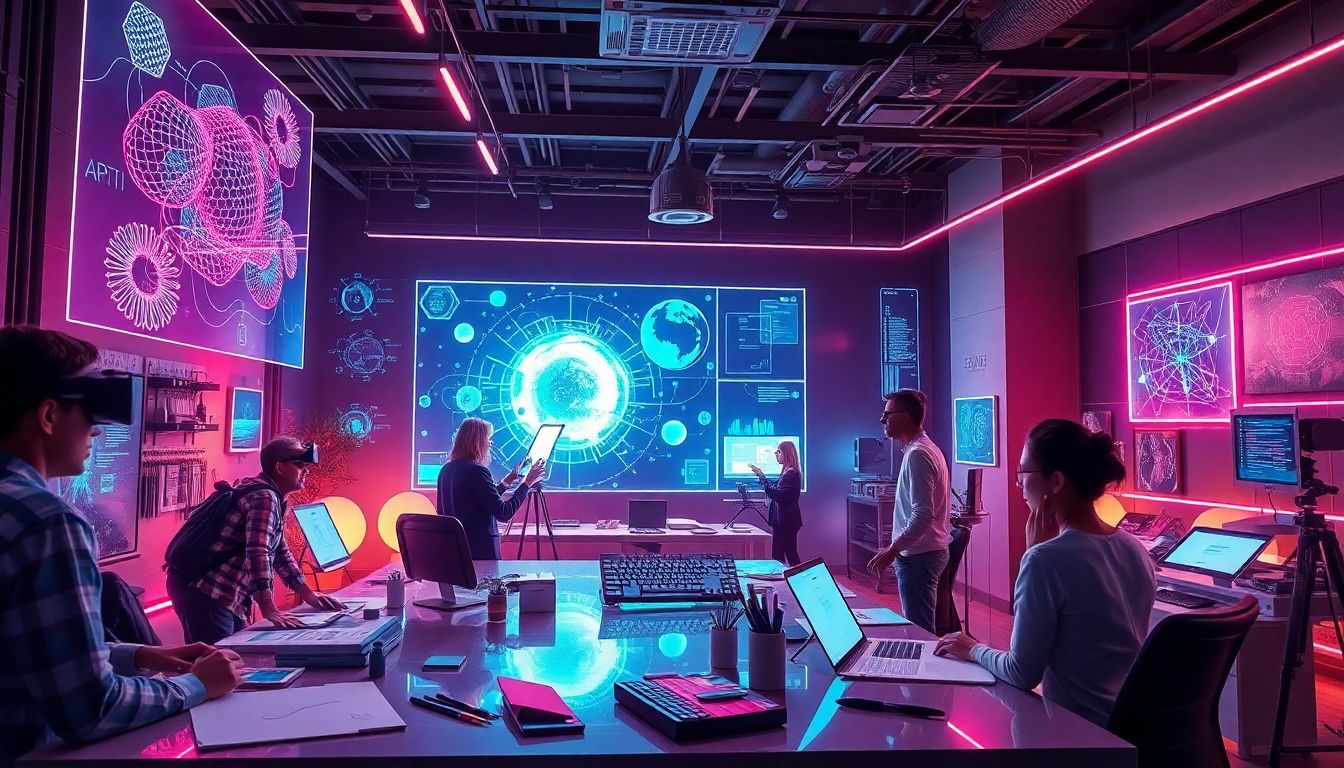5 Ways Generative AI Is Reshaping Creative Careers in 2025
Artificial intelligence is changing everything—especially in creative fields. Tech moves fast, and AI tools are now part of the everyday workflow for artists, designers, writers, and more. These new tools aren’t here to replace people but to boost what creatives can do. If you want to stay relevant, understanding how AI is transforming your career is crucial. It can open new doors and help you grow faster.


5 Ways Generative AI Is Reshaping Creative Careers in 2025
Introduction
Artificial intelligence is changing everything—especially in creative fields. Tech moves fast, and AI tools are now part of the everyday workflow for artists, designers, writers, and more. These new tools aren’t here to replace people but to boost what creatives can do. If you want to stay relevant, understanding how AI is transforming your career is crucial. It can open new doors and help you grow faster.
The Rise of Generative AI in Creative Sectors
Overview of Generative AI and Its Capabilities
Generative AI is a technology that creates content—text, images, music, or videos—based on input from users. It learns patterns and styles from massive data sets but still leaves room for human guidance. By 2025, tools like DALL-E 3, ChatGPT-5, and Midjourney are powering creative projects worldwide. They can turn a simple idea into a detailed image or assemble an entire story in seconds.
Market Adoption and Industry Integration
More companies are now deploying AI in creative work. Surveys show that over 60% of creative agencies use AI tools regularly. Industries like advertising, film, fashion, and game design are especially quick to adopt. For example, AI-driven storyboards help filmmakers visualize scenes faster, and brands use AI-generated art to spice up campaigns.
Accelerating Creativity and Expanding Artistic Boundaries
Enhancing Creative Processes
AI isn’t replacing artists; it’s assisting them. Creatives now brainstorm ideas faster. For instance, writers use AI to generate story prompts or edit drafts. In film production, AI streamlines storyboarding, saving hours. With AI handling repetitive tasks, creators focus on what matters—storytelling and unique ideas.
Breaking Traditional Limitations
AI removes many barriers. Independent artists with limited budgets can now produce high-quality visuals or music. Small studios use AI to design stunning visuals or compose soundtracks, options once only affordable for big companies. This opens a new world where anyone can create professional content.
Transforming Roles and Skill Sets in Creative Professions
New Job Opportunities and Roles
As AI tools grow more common, new roles emerge. Titles like AI Creative Director or AI Artwork Curator are now in demand. Existing jobs also shift. Graphic designers now use AI to generate multiple options quickly, increasing their output. These shifts mean more opportunities for those willing to learn.
Essential Skills for 2025 and Beyond
To stay ahead, creatives need to know how to work with AI. This means understanding basic algorithms and tools. Skills like human-AI co-creation, where a person guides the AI to get the desired result, are now vital. Creativity becomes a team effort—humans and AI working side by side.
Expert Insights
Industry leaders agree—adapting to AI isn’t optional. Many say that those who embrace these tools will have a competitive edge. The key is learning to control and guide AI, not letting it take over.
Ethical Considerations and Challenges in AI-Generated Content
Intellectual Property and Copyright Issues
Using AI raises questions about who owns the final work. Many are debating whether AI or the creator owns the rights. Creative professionals should protect their original ideas by documenting their process and licensing carefully.
Quality Control and Authenticity
While AI can generate impressive content, it isn’t perfect. Creators must review AI outputs to ensure originality. AI is a tool—the human touch keeps content authentic and meaningful. Balancing AI assistance with personal oversight is essential.
Promoting Ethical Use
With great power comes great responsibility. Creatives should use AI fairly, credit sources, and avoid copying or spreading false information. Ethical AI use builds trust and keeps the industry honest.
Practical Strategies for Creative Professionals
Integrating Generative AI into Daily Workflow
Start small. Test AI tools like Canva, Runway, or Jasper on your current projects. Use tutorials and online guides to learn best practices. Over time, integrate AI into your brainstorming, editing, and design phases to boost efficiency.
Continuous Learning and Upskilling
Stay on top of new tools with online courses and certifications. Join online communities where creatives share AI tips. Regularly updating your skills keeps your work fresh and relevant.
Building a Portfolio with AI-Generated Content
Showcase your ability to blend human creativity with AI. Make sample projects that highlight both your ideas and how AI helped bring them to life. Being transparent about your process builds trust with clients and employers.
The Future Outlook: What’s Next for Creative Careers in 2025 and Beyond
AI will keep advancing, offering new possibilities. Expect even smarter tools that anticipate your needs and suggest ideas. Adaptability becomes your best asset—those who learn quickly will thrive. Industry standards will shift, with a growing emphasis on hybrid human-AI work. Talent will be measured not just by skill but also by how well you harness AI.
Conclusion
Generative AI is rewriting the rules for creative careers. It helps us work faster, create more, and push boundaries. Instead of fighting technology, embrace it as your partner. Those who adapt will find new opportunities and stay ahead of the game. The future favors innovators—so start exploring AI tools today and unlock your creative potential.



 VARSHITHA
VARSHITHA